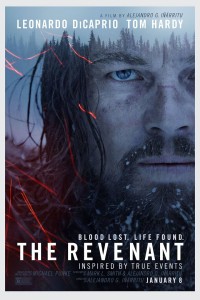

Verdict: Magnificently beautiful, “The Revenant” is a film that deserves to be enjoyed in the big screen of a theatre, where it’s not only seen or heard, but felt.
Grade: A
Not many directors release movies in back-to-back form. Fewer still are able to release two consecutive Golden Globe awards and possibly two Oscars. The Mexican Alejandro González Iñárritu is close to achieving the feat of grabbing one of cinema’s greatest awards for the second year in a row.
It is not luck. “The Revenant”, which tells the story of the legendary explorer Hugh Glass (Leonardo Di Caprio) who is left for dead by his hunting team after he is attacked by a bear, is a beautiful piece of cinema that follows the stunning “Birdman”. This is not to say that the former is a perfect film. It stutters in a second act that is too long and slows the pace of a story that is already heavy in its own right. Technically, however, “The Revenant” is one of the most beautifully shot films of this awards season.
Cinematographer Emmanuel Lubezki only used natural light to shoot the film, hoping “to make a movie that was immersive and visceral,” he told Variety Magazine. It is clear from the very first frame with a close up of Di Caprio against the wild and then followed by a slow moving camera through a shallow river in a cold forest that Lubezki achieved his goal.
In fact, there is often the feeling that you could just sit back and enjoy the images shot in Canada and Argentina. The late afternoon escape from the native Americans at the beginning of the film, a battle scene followed by the hunters on a boat drifting down a foggy river, just before daylight ends, is incredibly beautiful. Snow storms, long evenings and nights, deep woods, harsh mountains are all shot immaculately, making “The Revenant” a true feast to the eye.
Iñárritu takes full advantage of Lubezki’s work by making use of extended shots. The cuts aren’t rushed nor forced upon us: Iñárritú makes them come naturally, just when needed to advance scenes forward. This type of cutting imposes a slower pace to the film, which tends to work because of the beauty of each shot and also due to a story about men that are isolated from the world for months and months.
The pace falls apart in the second act of the film, where Hugh is left in the wild, subject to his own luck. While the first act works well as several characters try to save Hugh and debate what to do with him, the second act just seems to drag for too long. The third act is similar to the first in terms of pace and interesting conflict, but its energy is inevitably compromised by the long and slower middle part of the film. It doesn’t mean all is lost, as both the acting and the cinematography are spectacular, but there is a feeling that out of the long 2h47 run time, a lot could have been cut out without compromising the film.
Di Caprio gives us one of his best roles. He almost doesn’t speak on screen, as pain only allows his character to emit primitive and guttural sounds, with saliva or blood often running from his mouth. When Hugh lays down with his son, who is frozen in the snow, some words do come out of his mouth, but his brilliance in the scene is in the subtle gesture, where physical and emotional pain blend seamlessly and we can never know where one ends and the other begins. It is time to give Di Caprio his Oscar. He shows once again why he deserves it.
Iñárritú brought us a film that is extremely beautiful and well acted. Those two qualities just pulse through the screen for the whole duration of “The Revenant”. While not a perfect film, “The Revenant” deserves to be watched in a big screen where it shines with all its glory. An Oscar for Iñárritú is well in the cards and, make no mistake about it, he deserves it. Once again.
